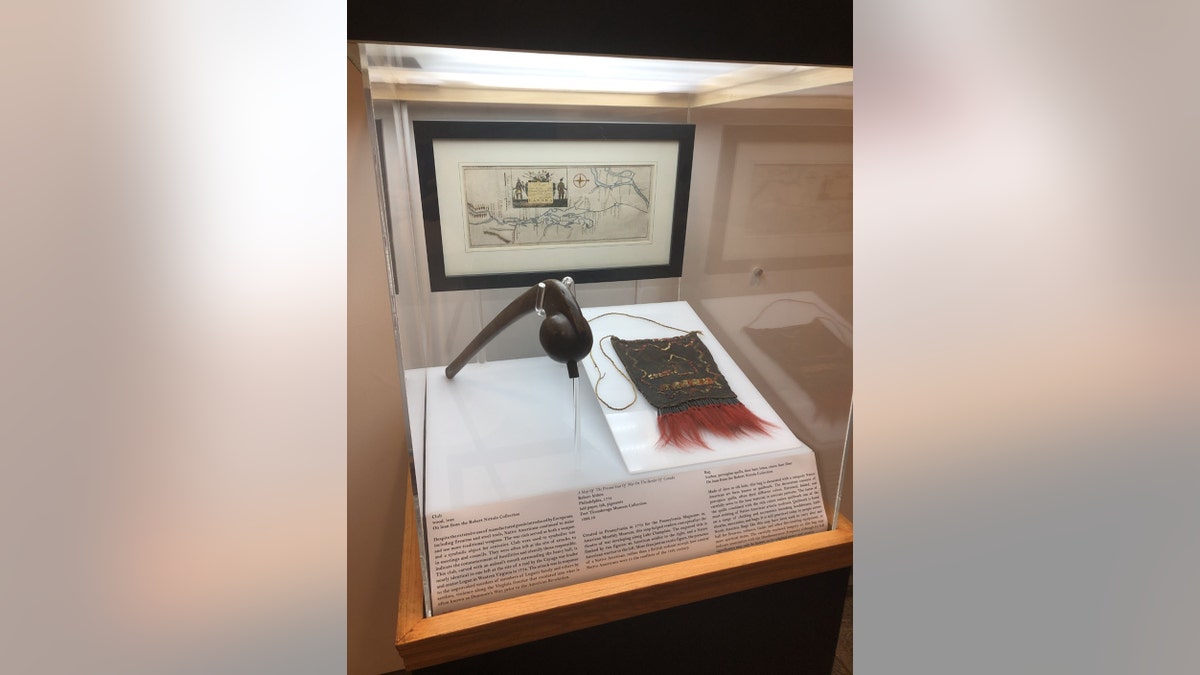Fox News Flash top headlines for August 16
Fox News Flash top headlines for August 16 are here. Check out what's clicking on Foxnews.com
Never-before-seen artifacts from 18th-century Native American culture that tell the story between the First Nations and the Europeans and how "they fought against and alongside" are set to go on display at Fort Ticonderoga in New York.
"Considered the most significant private collection of 18th century militaria," the exhibit includes a number of items, notably a wood and iron club, which was used as a weapon and symbol of war believed to date to the 1770s, a spokesperson told Fox News. The club was often left at battlefields to mark the site.
Also going on display will be a bag, known as quillwork, that was used by a Native American soldier. The bag is decorated with Iroquois symbols and is believed to have been used for carrying musket supply "or other battlefield necessities."

(Credit: Fort Ticonderoga)
'PRICELESS' REVOLUTIONARY WAR MEDAL GOES ON DISPLAY
“This installation recognizes the significant role of Native communities in the fate of the continent, and encourage increasing dialogue between these First Nations and the descendants of the Europeans they fought against and alongside over the long 18th century,” said Matthew Keagle, curator, Fort Ticonderoga, in a statement.
Keagle added: “The artifacts and histories of conflict are the starting point for conversations that further Fort Ticonderoga’s mission to preserve, educate, and provoke an active discussion about the past and its importance to present and future generations.”
The items are on loan from the Robert Nittolo Collection and will be available to the viewing public through October 2019.
Last year, Fort Ticonderoga displayed an original Society of the Cincinnati gold eagle medal. The medal, which was owned by Captain Richard Douglass from New London, Ct., is one of just two surviving examples made for officers of the Continental Army in the Revolutionary War.





















